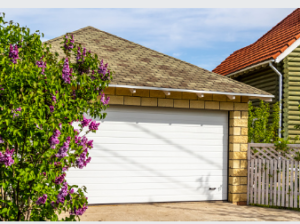Roller doors are highly-preferred due to their durability, strength, and corrosion resistance. Furthermore, they can be customised to suit a range of opening sizes.
 To remain functional, doors require periodic visual inspections and lubrication of their operating mechanisms. However, external forces or lack of maintenance could cause them to be damaged beyond repair.
To remain functional, doors require periodic visual inspections and lubrication of their operating mechanisms. However, external forces or lack of maintenance could cause them to be damaged beyond repair.
The Door
FastFixrollerDoors roller door repair Adelaide are generally easy to maintain, yet accidents and damage may still occur – which is why any product purchased must come with Secured by Design status – this signifies that it has been tested and designed specifically to keep out intruders. Furthermore, roller doors should be regularly wiped down with water to avoid rusting.
Steel or aluminium doors feature metal tracks on either side that connect them. When these tracks become damaged or twisted, it can cause the door to get stuck or make noise when opening and closing it, leading to potential security risks and frustration when opening and closing it. A qualified roller door repair service can address this problem by inspecting its tracks for signs of twisting and fixing any damage as necessary.
Another common door issue is having difficulty closing properly. It could be caused by anything from blocked or damaged sensors to being too heavy. If this is the case for you, hire a specialist to inspect them and either clean them off or replace them as required.
Before hiring a roller door repair service, it’s smart to get multiple bids from various providers and compare their offerings and services before selecting the ideal provider for your needs. Look for one with 24/7 services, licensed insurance policies, positive client testimonials and positive reviews from past clients.
The Hinges
Hinges are typically the first component to show signs of wear on doors, especially if exposed to constant friction from swinging open and closed. Hinge components include leaves, knuckles, and pins; rectangular-shaped plates on either side of a hinge act as leaves, while cylindrical-shaped tubes connect two leaves via their hinge points while pins provide jointing connections between both knuckles for extra support.
Various factors may cause loose hinges, but thermal expansion and contraction are usually to blame. When this happens, metal expansion causes loosening between plates that causes eventual detachment from the door or rattle and shake effects.
Replacing hinges is often the best solution, ensuring an exact match with the existing one. Install a new roller ball bearing into its proper slot of a hinge’s roller mount, tip back the front edge of the roller onto its track, position it over any bolt holes, tap through bolts from outside through hinge holes, and tighten with a socket set if necessary. When purchasing new hinges, it may help to bring along their old counterpart for comparison purposes when shopping.
The Locks
If you own a sliding door, it is essential that the lock functions as intended. A broken lock makes it easy for intruders to gain entry, while locked roller doors provide a reliable barrier and serve as a warning sign when someone is home. If it seems as if your roller door doesn’t lock properly or doesn’t shut as expected, consider calling in professional services.
A standard garage cylinder lock consists of three parts: the cylinder, bolt and box. The cylinder fits into the keyhole outside of the door and has a hole at its base that fits a bolt when closed. Once attached to the cylinder, it extends into its box, which keeps the bolt secure during the locking operation.
Standard T-handle locks feature an interior keyed handle and an exterior T-shaped lever with tensioned cables attached to latches on either side of the door, each of which can be secured using tensioned cables attached by tensioned cables. Repairing one is relatively straightforward if its handle becomes loose: loosen and remove screws on both handles before pulling one off and replacing it with the new handle, making sure that the tabs on the lock bar helper spring line up with holes in the cylinder, then tighten it back down again before tightening screws on both interior handles before screwing it back down!